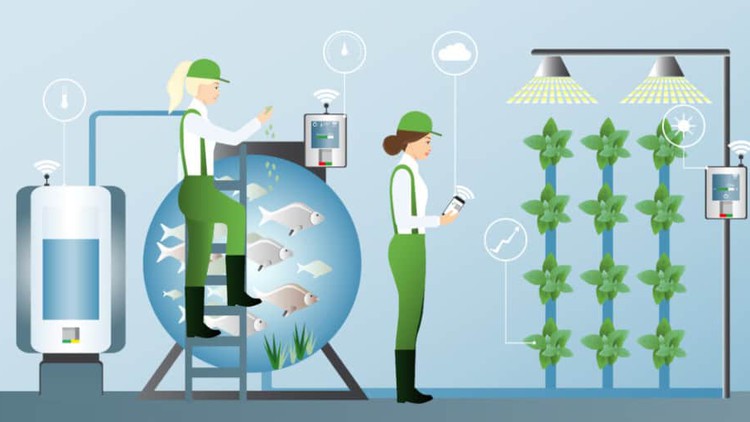
Learn All About Aquaponics and How to Get Started
What you will learn
Learn all about Aquaponics
Learn about Fish Anatomy and Feeding and Growth
Learn about Hydroponic Systems, Plant Anatomy, Growth Requirements and Nutrient Supply
Aquaponic System Design and Calculation of Dimensions
Description
Aquaponics is a sustainable method of raising both fish and vegetables. It is popular with individuals, entrepreneurs, educators, missions and governments. With this type of indoor farming, you grow substantially more food with less water, land and labor than traditional agriculture.
Aquaponics is a farming system that uses water, fish, and plants to maximize growing space, water, and fertilization.
In this course you will learn all about aquaponics and how to set up and maintain a flourishing aquaponics operation firsthand.
We will first start out with the basics of aquaponics and how it works. We’ll get into how to manage the fish and the plants. After that, we’ll get into more in-depth topics such as managing your aquaponics systems. Along the way we’ll go over many important tips.
Aquaponics is putting fish to work. It just so happens that the work those fish do (eating and producing waste), is the perfect fertilizer for growing plants.
One of the more interesting things about Aquaponics is that it mimics a natural ecosystem. Aquaponics represents the relationship between water, aquatic life, bacteria, nutrient dynamics, and plants which grow together in waterways all over the world. Taking cues from nature, aquaponics harnesses the power of bio-integrating these individual components: Exchanging the waste by-product from the fish as a food for the bacteria, to be converted into a perfect fertilizer for the plants, to return the water in a clean and safe form to the fish. Just like mother nature does in every aquatic ecosystem.
If you are serious about growing food through your own aquaponics system and want the opportunity to learn in-depth professional training, this course is for you. By the completion of this course, you will be able to design, build, and operate an aquaponics system for personal, education, or commercial use.